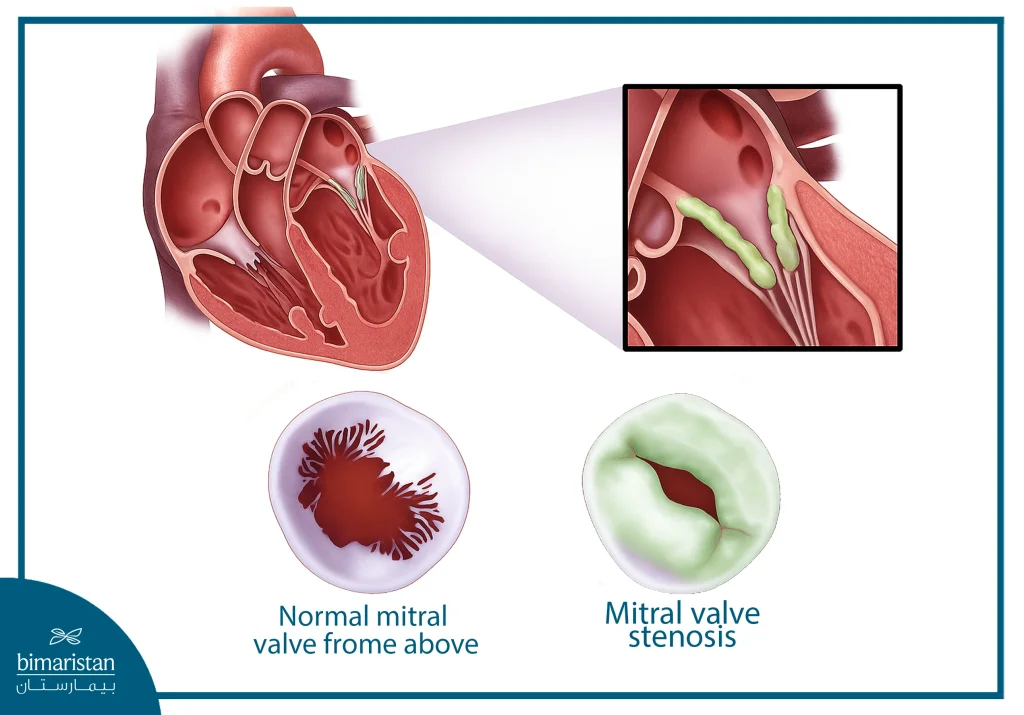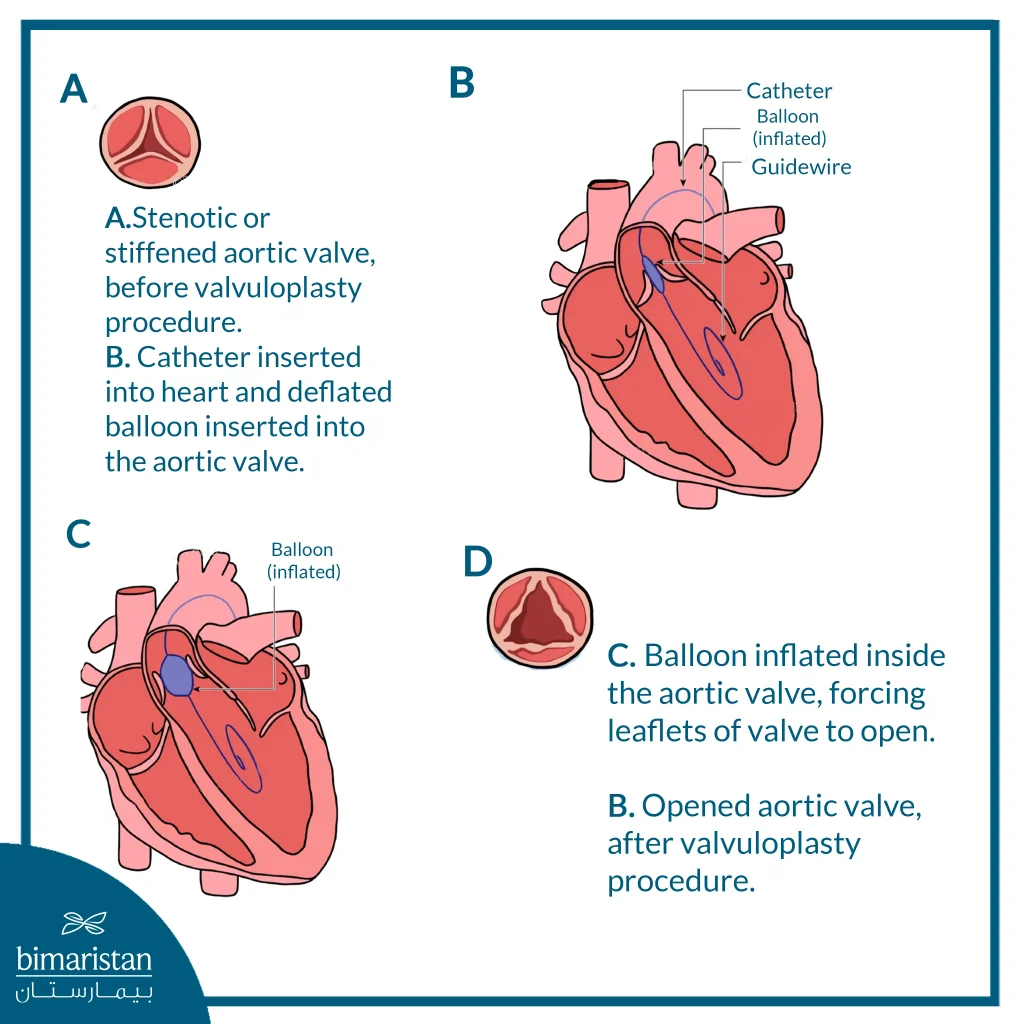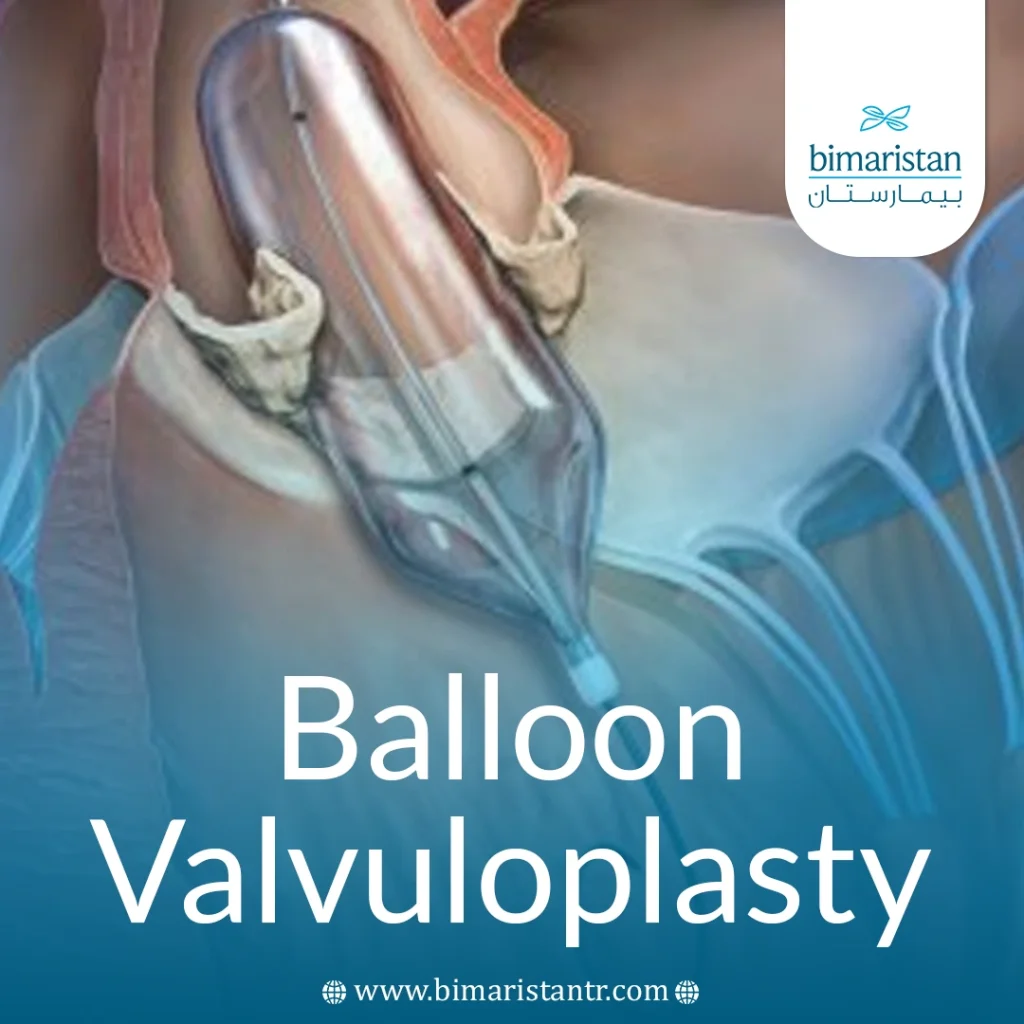Valvular heart disease is a health issue that can significantly affect the functioning of the heart and its circulation, and with the development of modern medicine, treatment methods have emerged to help improve valve function and maintain the patient’s health. Balloon valvuloplasty is a minimally invasive medical procedure that aims to widen a narrowed valve and restore normal blood flow.
What are heart valves, and how do they work?
The heart has four main valves that act as gates that control the passage of blood in one direction: The mitral valve, aortic valve, tricuspid valve, and pulmonary valve. These valves open and close with each heartbeat to allow oxygen-rich blood to pass through and prevent it from going backward. When a valve becomes stenotic, the opening of the valve becomes narrower than normal, obstructing blood flow and increasing pressure on the heart, which is when treatments such as balloon valvuloplasty are needed.

What is balloon valvuloplasty?
Balloon valvuloplasty, also known as valvuloplasty or valvulotomy, is a minimally invasive medical procedure used to widen a narrowed heart valve and improve blood flow through it. This is done by inserting a thin, flexible tube (catheter) with a small balloon at its tip through a blood vessel in the groin area, then guiding it towards the affected valve. Once the catheter is in place, the balloon is inflated to enlarge the opening of the valve, and after achieving the desired enlargement, the balloon is deflated and the catheter is withdrawn outside the body. This procedure is less invasive than open-heart surgery and is used as a treatment option for some valve issues, such as mitral, aortic, or pulmonary.
The balloon’s principle of action
Balloon valvuloplasty involves inserting a small, uninflated balloon into the stenotic valve, then briefly inflating it so that it pushes the stiff valve leaflets aside, widening the opening and restoring better blood flow. The balloon is then deflated and pulled out of the body.
When is balloon valvuloplasty used?
Balloon valvuloplasty is performed when the valve becomes so narrow that it obstructs blood flow and causes symptoms such as shortness of breath, chest pain, or irregular heartbeat. This intervention can be applied in several situations:
- Mitral valve stenosis: The most common condition treated with a balloon.
- Pulmonary valve stenosis: commonly used in children or young adults.
- Tricuspid valve stenosis: Less common but possible in some cases.
- Aortic valve stenosis: It is sometimes used as a temporary solution, especially in adults or patients who are not candidates for surgery.
Sometimes this procedure is temporary, as the patient may later need a full valve replacement. For example, aortic valve stenosis in adults tends to return after balloon dilation, making the procedure more suitable for those who cannot undergo surgery immediately, or pending preparation for a definitive procedure such as aortic valve replacement.
Preparing for balloon valvuloplasty
Before a balloon valvuloplasty procedure, the doctor asks the patient to follow a set of instructions to minimize risks and ensure a safe procedure. Preparation usually involves assessing a complete health history, reviewing medications, and performing certain medical tests. The patient must also :adhere to some important guidelines before the day of the procedure. Basic preparation steps include
- Fasting from midnight the night before the operation
- Stopping certain medications, such as blood thinners or aspirin, as recommended by your doctor
- Inform the medical team of all medications and herbal supplements taken
- Tell your doctor if you are allergic to medications, radiation dyes, or iodine
- Blood tests to measure clotting factors and other tests as needed
- Provide information on any previous heart, lung, liver, or kidney disease
- Tell your doctor about implanted devices, such as a pacemaker or stents
- Do not wear metal jewelry or removable dentures on the day of the procedure
Additionally, the patient may be asked to visit the hospital the day before for final checks, where the medical team will review their health file and ensure they are fully prepared for the procedure.
Balloon valvuloplasty procedure steps
This procedure is performed in the hospital by an interventional cardiologist and usually takes an hour or more. The patient is awake in most cases, but is given an intravenous sedative to help them relax, as well as a local anesthetic at the catheter insertion site. The patient is hooked up to pulse, blood pressure, and breathing monitors during the procedure to ensure their safety, and the basic steps of the procedure include the following:
- Inserting a thin tube (sheath) into a blood vessel, often in the groin area
- Passing a catheter with a balloon at the tip through the sheath and guiding it using radiologic images and cardiac catheterization to the location of the stenotic valve
- Injecting a colored substance (radiation dye) that helps the doctor see the valve clearly
- Inflating a balloon at the site of the stenosis to widen the valve opening and improve blood flow
- Repeat inflating and deflating the balloon more than once if necessary until the desired result is obtained
- Deflating the balloon and removing the catheter from the body
- Closing the catheter insertion site with local pressure, a small suture, or a special medical adhesive
In some cases, the sheath is left inside the blood vessel for several hours after the procedure, especially in patients taking blood thinners, to minimize the risk of bleeding before it can be safely removed.

Advantages of Balloon Valvuloplasty
Balloon valvuloplasty is a minimally invasive procedure that helps improve blood flow through a stenotic valve, relieving stress on the heart muscle and reducing symptoms. In some cases, the procedure can postpone the need for surgical valve replacement. Advantages over open surgery include:
- Less pain during the postoperative period
- Faster recovery and a quicker return to daily life
- Reduced risk of complications compared to traditional surgery
- Less surgical scarring because it is a catheter-based procedure rather than a large incision
Thanks to these advantages, balloon valvuloplasty has become the preferred option for many patients and doctors in selected cases.

Risks and possible complications of balloon valvuloplasty
Although balloon valvuloplasty is a relatively safe procedure compared to open surgery, like any medical intervention, it comes with some risks. The likelihood of complications varies depending on the patient’s overall health and the type of valve affected. The most common complications include
- Stroke or heart attack (rare)
- Clot formation or blood vessel injury
- Bleeding or infection at the catheter insertion site
- Blood leaking through the valve (valve regurgitation)
- Restenosis of the valve some time after the procedure
- A heart rhythm disorder that may require additional treatment
- Allergic reaction to radiation dye or certain medications
Recovery after balloon valvuloplasty
The recovery period after balloon valvuloplasty varies from patient to patient, depending on their health condition, but it usually goes through two main phases: The first is in the hospital immediately after the procedure, followed by a period of care and follow-up at home.
In the hospital
After the balloon valvuloplasty is completed, the patient is transferred to the observation room where he/she remain under the supervision of the medical team for several hours. A bandage is applied to the catheter insertion site, and if the insertion is from the groin area, the leg should not be bent for two to six hours, during which time blood pressure, heart rate, and breathing are continuously monitored, and the patient is encouraged to drink sufficient amounts of water to help flush the radiation dye from the body. The patient will often spend one night in the hospital before being discharged.
At home
The patient may notice a slight bruise where the catheter was inserted, which is normal. However, you should pay attention to signs such as bleeding, swelling, or a change in the color and temperature of the limb. It is important to keep the wound site clean and dry and to avoid swimming or bathing in a tub of water until the wound is completely healed. Doctors usually recommend refraining from strenuous activities for five to seven days, and returning to work after about a week if it is an office job, while those who engage in physical labor may need more time.
The doctor usually schedules follow-up appointments three to six months after the procedure, followed by regular annual reviews to make sure the valve is still functioning properly. Most patients experience rapid improvement in symptoms such as shortness of breath or fatigue within the first few days after the procedure.
Balloon valvuloplasty or surgery? Comparison with other alternatives
Balloon valvuloplasty is not the only solution for heart valve issues, but it is one of several treatment alternatives that the doctor determines to be the most appropriate, depending on the type of valve affected, the severity of the stenosis, and the patient’s age and health condition.
| Procedure | Features | Limits/Cons | The most suitable cases |
|---|---|---|---|
| Balloon valvuloplasty | Minimally invasive catheter procedure – Faster recovery – Less pain and complications compared to surgery | It may be temporary because the valve may narrow again, especially in the aorta in adults | Mitral or pulmonary valve stenosis – Patients not eligible for surgery – Transitional solution before replacement |
| Valve replacement | Often a permanent solution – prevents restenosis | Requires major surgery (open heart) or a transcatheter procedure such as TAVR – may require lifelong blood thinners | Severely damaged or failed balloon therapy |
| Valve repair | Preserves the normal valve – Suitable for young children – Does not require long-term blood thinners | Not suitable for all cases – requires advanced surgical expertise | Specific valve abnormalities – some cases of young people |
Balloon valvuloplasty cost
The cost of balloon valvuloplasty in Turkey varies depending on the patient’s condition and the medical center where the procedure is performed. In general, this procedure is less expensive than valve replacement surgery, ranging in most Turkish centers between approximately 3,000 and 4,000 USD, and in some advanced hospitals it may reach higher limits depending on the equipment and services provided, in addition, Turkey offers this procedure at competitive costs compared to European countries while maintaining a high quality of medical care, making it a preferred destination for patients looking for effective treatment for valve stenosis at a reasonable cost.
In conclusion, balloon valvuloplasty is an effective treatment option to relieve the symptoms of heart valve stenosis and improve blood flow without the need for major surgery. Although the results may be temporary in some cases, it gives patients a chance to improve their quality of life and postpone the need for valve replacement. The final decision is always left to the physician after evaluating each case individually.
Sources:
- Rodriguez, E., Raissi, R., Bott, M., & Morse, M. A. (2021). MitraClip™: a step by step guide for surgeons. Annals of Cardiothoracic Surgery, 10(1), 180-182.
- Penn Medicine. (2025, April). Balloon valvuloplasty (valvotomy).
- Johns Hopkins Medicine. (n.d.). Valvuloplasty.

